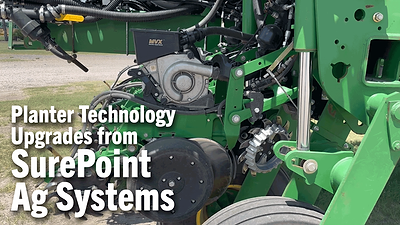Nowhere has the confusion about vertical tillage caused more consternation than with no-till farmers. In fact, it got to the point where Iowa conservationists with USDA’s Natural Resources Conservation Service (NRCS) admitted they were “disturbed by the number of row-crop farmers using vertical tillage tools. Vertical tillage often leaves the soil covered with crop residue, but it is not the same as true no-till,” they said in a report aptly titled “Vertical Tillage is Not No-Till.”
Under its definition, the Iowa NRCS says, “Vertical tillage equipment is used to lightly till the soil and cut up residue, mixing and anchoring a portion of the residue into the upper few inches of soil while still leaving large quantities of residue on the soil surface.”
According to the NRCS, there is a misconception that if you leave a field covered with residue, you are a no-till farmer. No-till is not just about leaving residue on the soil surface. It is also about stopping the disturbance of the soil structure. Any tillage, regardless of its depth, will undo all of the benefits of any previous no-till farming if it fractures the consolidated soil and breaks the macro-pores. This includes losing any improvements in soil quality gained by previous investments in no-till.
Tillage & Erosion
The report goes on to say that several NRCS soil conservationists had spoken with farmers who practice vertical tillage on D slopes (9-14%), and they refer to it as no-till when it is a different practice altogether. “There is a lot of misinformation out there,” says Curt Donohue, district conservationist with NRCS in Newton, Iowa. “One pass with a tillage tool — even with high amounts of residue remaining — can dramatically increase soil loss.”
No-till is most important for erosion protection on steeper slopes. During heavy rains, Donohue says no-till fields have relatively minor erosion compared to tilled fields. “Even fields with high residue levels where vertical tillage tools were used had extreme sheet and rill erosion and relatively severe ephemeral erosion compared to no-till fields,” he said.
Tillage & Soil Structure
Barb Stewart, state agronomist for NRCS in Iowa, says that although vertical tillage leaves large amounts of crop residue cover, the tillage impacts of the equipment are significant. “Soil disturbing activities, like tillage, destroy soil structure,” she says. “When this happens, it limits a soil’s ability to function properly and leaves topsoil susceptible to erosion on steeper slopes.”
Kevin Kuhn, area resource conservationist for NRCS in Atlantic, Iowa, says when soil is disturbed, the soil structure and habitat for soil organisms get destroyed, water infiltration is reduced, runoff is increased, and soil quality declines. “Tillage disrupts the soil’s natural biological cycles and wrecks the structure of the soil, making it susceptible to erosion,” says Kuhn.
He says no-till is Iowa’s most important conservation practice in the fight against soil erosion. “I don’t want to knock vertical tillage because it’s good at leaving residue cover, but the goal of no-till is to reduce surface disruption and therein lies the difference between the two practices.”
Conservation Compliance
The report goes on to say, since 1985, conservation compliance has been a requirement of all USDA program participants. Any tillage not accounted for in a farmer’s conservation plan may put a farmer out of compliance with erosion provisions. Don Carrington, NRCS resource conservationist in Des Moines, says if a producer makes a full-width tillage pass through a field when no-till is required, that producer may no longer be compliant with the highly erodible land provisions of the Farm Bill. Carrington recommends farmers check with their local NRCS office before:
- Using any new tillage equipment,
- Conducting any tillage if your conservation plan calls for no-till,
- Fixing small gullies on highly erodible land from ephemeral erosion.
No-Till is Not
According to the USDA’s Natural Resources Conservation Serviice in Iowa, true no-till does not allow for:
- Using a rotary harrow (Phoenix or Phillips harrow)
- Using a row-crop cultivator
- Using a vertical tillage tool
- Incorporating manure with disc covers
- Tilling ground every other year or once every 4 years






